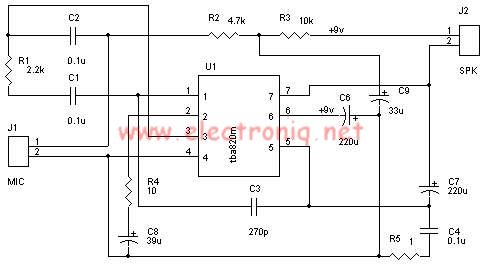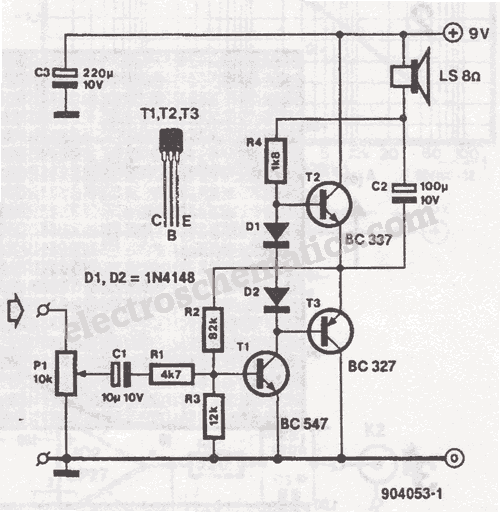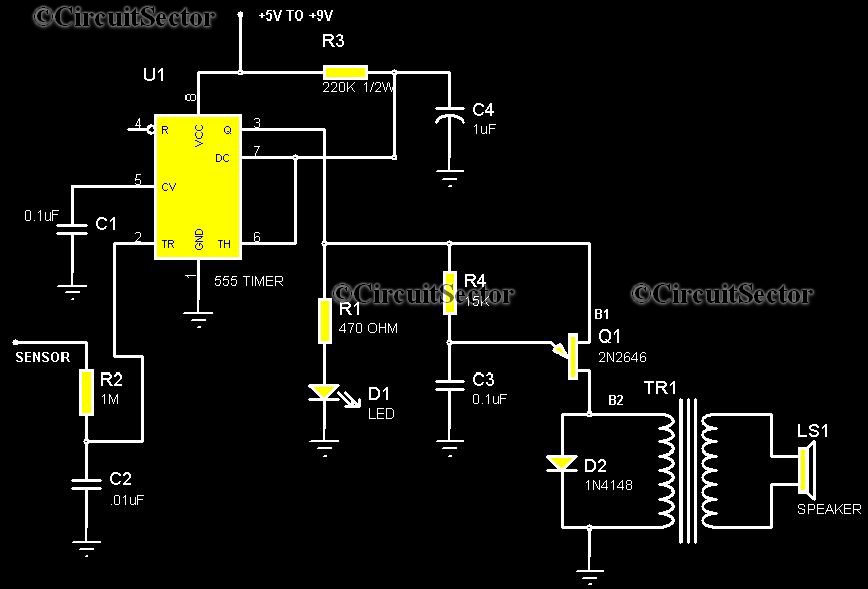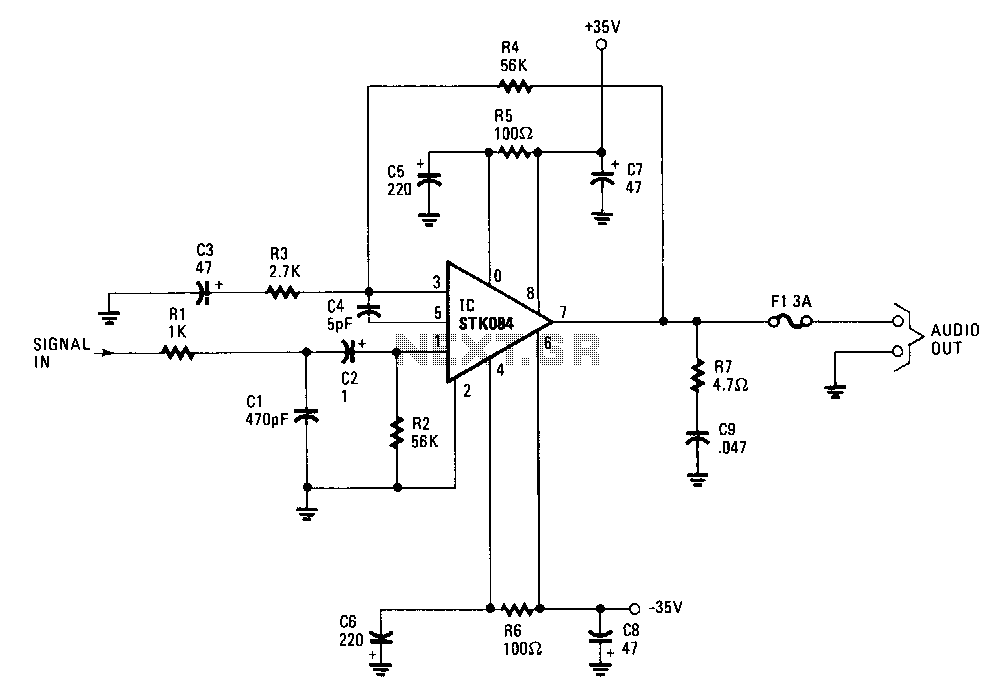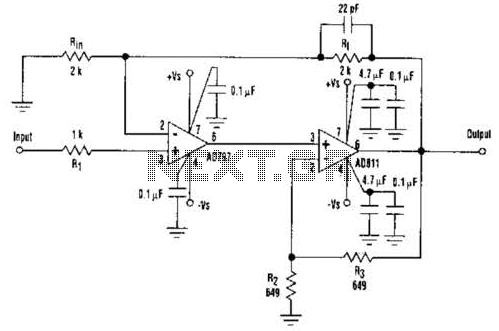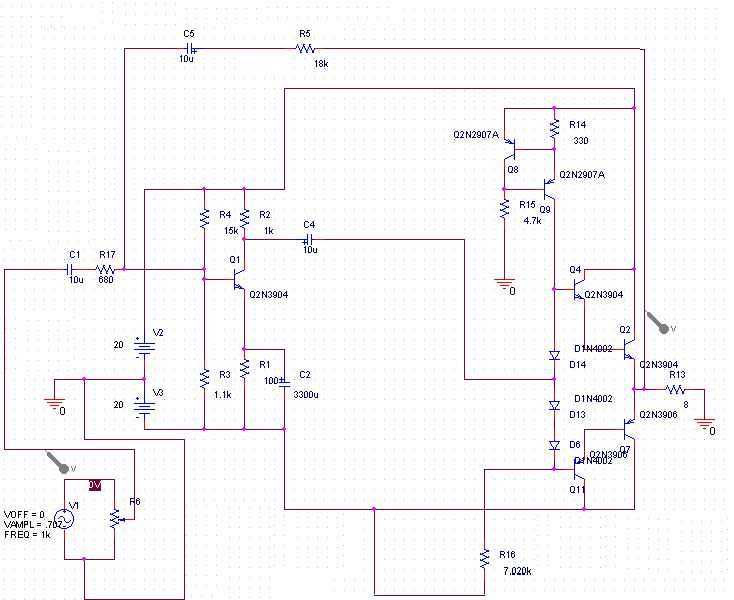
How to Increase TDA2030 Amplifier Gain PCB

The TDA 2030 is a widely used 14W audio power amplifier monolithic integrated circuit in a Pentawatt package, intended for use as a low-frequency Class AB amplifier. Some home theater prototypes utilize the TDA 2030 as a low-frequency subwoofer amplifier. To increase the volume level, a pre-amplifier can be employed. An effective method is to use a filter board with a dual low-noise operational amplifier, such as the NE5532. The power supply required for the NE5532 board is the same as that of the TDA 2030, which is 12V-0-12V. The advantage of using this type of pre-amplifier is that it provides a high-frequency cut-off as well as the necessary gain for the input signal from devices such as a DVD player or computer. Some circuit board designs may use a 10K resistor in place of the default 22K recommended by the TDA 2030 designers. It is advisable to use a 22K resistor or higher to increase the gain, thereby reducing the bypass of input to ground, ensuring that the input remains noise-free. However, increasing the gain beyond the recommended value may result in overheating of the IC unless effective heat control methods are implemented.
The TDA 2030 integrated circuit is specifically designed for audio amplification applications, providing a robust solution for driving low-frequency speakers, particularly subwoofers. The Pentawatt package allows for efficient heat dissipation, which is essential for maintaining performance and reliability during operation. When integrating the TDA 2030 into a circuit, it is crucial to consider the power supply specifications. The recommended dual power supply of ±12V ensures optimal performance, allowing the amplifier to deliver its full rated output without distortion.
To enhance the performance of the TDA 2030, the inclusion of a pre-amplifier such as the NE5532 is beneficial. The NE5532 is known for its low noise characteristics and high gain, making it an excellent choice for audio applications. It operates effectively with the same power supply as the TDA 2030, simplifying the design and reducing component count. The NE5532 can be configured to provide the necessary gain while also implementing a high-frequency cut-off filter, which helps to eliminate unwanted noise and distortion from the input signal.
In terms of resistor selection, the choice of feedback resistor is critical for maintaining the integrity of the input signal. While some designs may opt for a 10K resistor, using a 22K resistor or higher is recommended to prevent excessive bypassing of the input to ground. This ensures that the amplifier operates within its optimal range, minimizing noise and maximizing signal clarity. However, caution is advised when adjusting gain settings, as excessive gain can lead to overheating of the TDA 2030. Proper thermal management strategies, such as heatsinking and ensuring adequate airflow, should be implemented to prevent thermal failure.
Overall, the combination of the TDA 2030 and NE5532 in an audio amplification circuit offers a powerful solution for subwoofer applications, providing high-quality sound reproduction while maintaining stability and reliability under varying operational conditions.TDA 2030 is a widely used 14W audio power amplifier monolithic integrated circuit in Pentawatt [ package, intended for use as a low frequency class AB amplifier. However some home theater prototype came with For low frequency subwoofer amplifier using 2030, you can increase the volume level using a pre amplifier.
The best method is use a subwoofer filter board using DUAL LOW-NOISE OPERATIONAL AMPLIFIER - NE 5532. The power supply required for this NE5532 board is asame as that of TDA 2030 requires (12 - 0 - 12) The advantage of using this type of pre-amp is that we get high frequency cut-off as well as necessary gain for the input signal from DVD player or computer. Some circuit board designs usually soldered a 10K or less value resistor in place of default 22K recommended by the 2030 designers.
USe 22K or more instead of 10K to increase the gain thereby reducing the bypass of input to ground. (input should be noise free) However the increasing gain over the reccomended value may result in overheating the IC unless you have best heat control methods. 🔗 External reference
The TDA 2030 integrated circuit is specifically designed for audio amplification applications, providing a robust solution for driving low-frequency speakers, particularly subwoofers. The Pentawatt package allows for efficient heat dissipation, which is essential for maintaining performance and reliability during operation. When integrating the TDA 2030 into a circuit, it is crucial to consider the power supply specifications. The recommended dual power supply of ±12V ensures optimal performance, allowing the amplifier to deliver its full rated output without distortion.
To enhance the performance of the TDA 2030, the inclusion of a pre-amplifier such as the NE5532 is beneficial. The NE5532 is known for its low noise characteristics and high gain, making it an excellent choice for audio applications. It operates effectively with the same power supply as the TDA 2030, simplifying the design and reducing component count. The NE5532 can be configured to provide the necessary gain while also implementing a high-frequency cut-off filter, which helps to eliminate unwanted noise and distortion from the input signal.
In terms of resistor selection, the choice of feedback resistor is critical for maintaining the integrity of the input signal. While some designs may opt for a 10K resistor, using a 22K resistor or higher is recommended to prevent excessive bypassing of the input to ground. This ensures that the amplifier operates within its optimal range, minimizing noise and maximizing signal clarity. However, caution is advised when adjusting gain settings, as excessive gain can lead to overheating of the TDA 2030. Proper thermal management strategies, such as heatsinking and ensuring adequate airflow, should be implemented to prevent thermal failure.
Overall, the combination of the TDA 2030 and NE5532 in an audio amplification circuit offers a powerful solution for subwoofer applications, providing high-quality sound reproduction while maintaining stability and reliability under varying operational conditions.TDA 2030 is a widely used 14W audio power amplifier monolithic integrated circuit in Pentawatt [ package, intended for use as a low frequency class AB amplifier. However some home theater prototype came with For low frequency subwoofer amplifier using 2030, you can increase the volume level using a pre amplifier.
The best method is use a subwoofer filter board using DUAL LOW-NOISE OPERATIONAL AMPLIFIER - NE 5532. The power supply required for this NE5532 board is asame as that of TDA 2030 requires (12 - 0 - 12) The advantage of using this type of pre-amp is that we get high frequency cut-off as well as necessary gain for the input signal from DVD player or computer. Some circuit board designs usually soldered a 10K or less value resistor in place of default 22K recommended by the 2030 designers.
USe 22K or more instead of 10K to increase the gain thereby reducing the bypass of input to ground. (input should be noise free) However the increasing gain over the reccomended value may result in overheating the IC unless you have best heat control methods. 🔗 External reference
